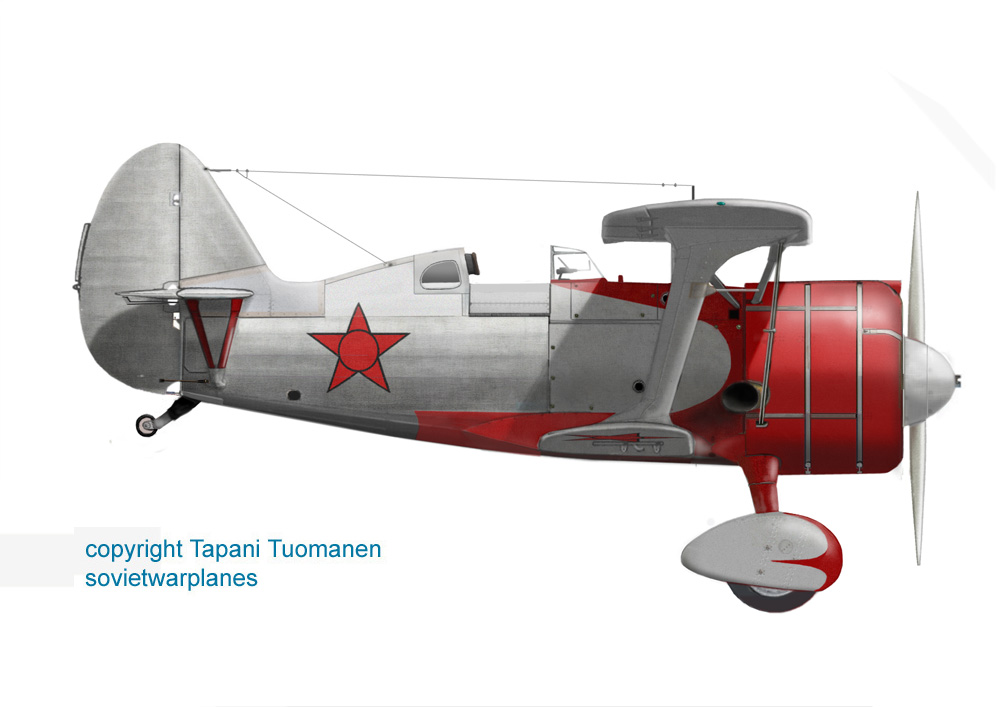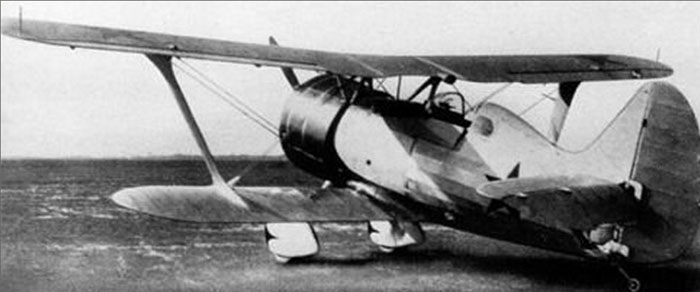
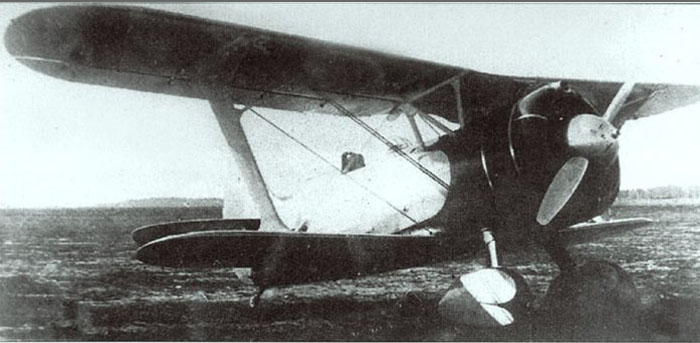
When compared to the successive production I-15bis, the prototype featured some differences:
- the windscreen was different, similar to that of I-16;
- it was equipped with a PAK-1 gunsight instead of the OP-1 of the production planes;
- the side doors of the cockpit had a straight profile;
- the back of the fuselage was wider, more extended forward, and had a window on each side; this changed the section of the rear fuselage, that has become oval, without the concavities on the sides due to the narrow back of the production planes;
- the engine cowling was opened on the front, without the shutters and the plate that covered the front of production I-15bis;
- the spinner was sharper than on production planes;
- the rudder was a bit lower;
- there was a tail wheel instead of a skid;
- there was a circular mirror, protected by an aerodynamic fairing on the upper wing, on the right of the pilot;
- it was equipped with a RSI-3 radio; two small masts were installed over the upper wing, one close to each wingtip;
- the aerial wires from the wingtips joined together close to the fin;
- a further wire went from the confluence of the wires, close to the fin, to the right side of the back of the fuselage.
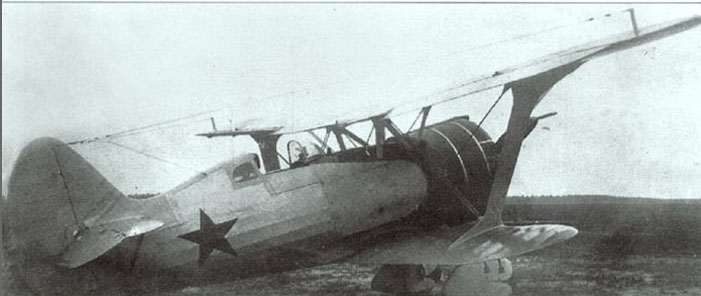
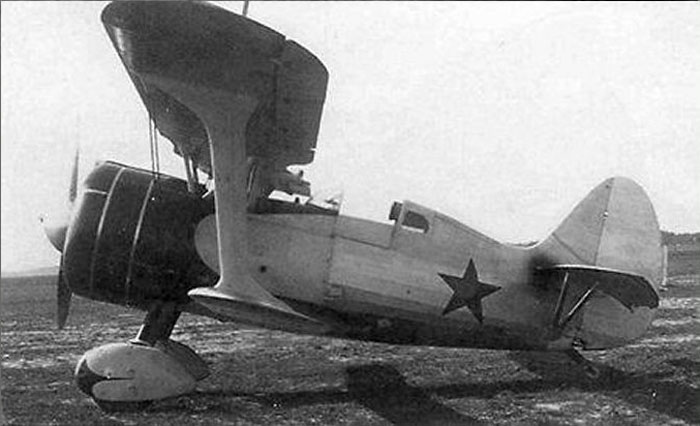
The prototype seems to wear a silver-grey livery:
- AII aluminum on fabric-skinned surfaces
- light grey AE-9 on metallic parts.
The nose and with wide parts of the fuselage were painted with a dark glossy color, probably dark red; the shape of the (supposed) red area on the sides wasn't perfectly mirrored.
In addition to the nose, the legs and the front part of the wheels fairings were painted red (?).
The red (?) looks extended to the struts of the stabilizers too.
The spinner looks painted silver.
The stars were of the usual type, with thin black circles and outline, and put on six positions as for prewar standard.
Below: profile of the TsKB-3bis.
